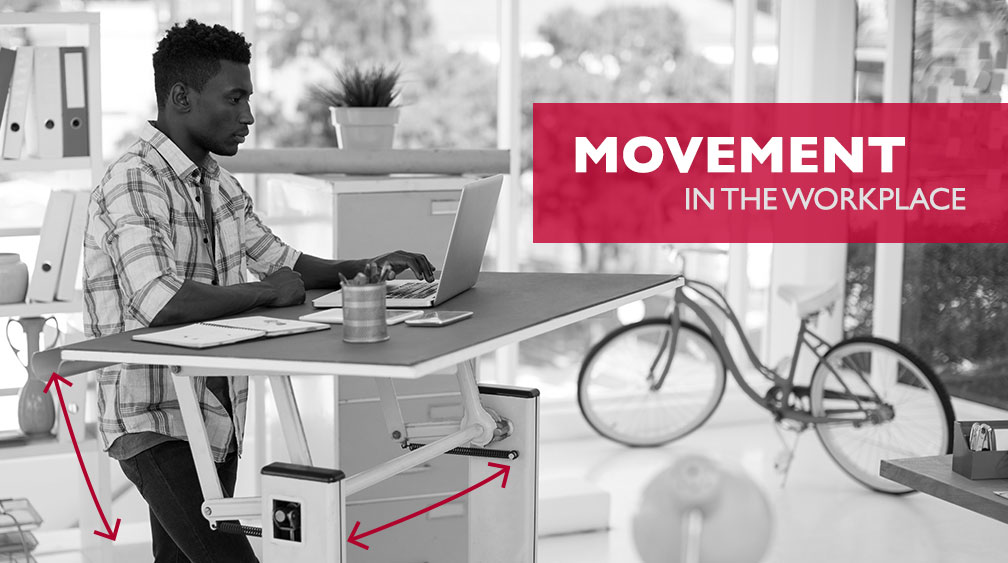Have you ever noticed how much you physically move throughout your workday? You may frequently find yourself getting up to grab something from the printer, walking to the break room, or meeting with a colleague. Maybe you obey your smartwatch as it annoyingly tells you to stand up and breathe. We all know that it is important to move around during the day – but how does your workspace and culture support movement?
According to the Department of Health and Human Services (HHS), our mind and body immediately recognize the benefits of moving throughout the day. Not much has changed since the 2008 Physical Activity Guidelines for Americans were published. The new 2018 guidelines share that any movement is better than none, and being active throughout your day can reduce anxiety, improve sleep, and stabilize blood sugar. According to these guidelines, completing 75-300 minutes of moderate-vigorous activity per week yields long-term cognitive benefits and significantly lower risks of heart disease and certain cancers.
Okay, we get it; let’s get moving! But how?
Workplaces are continuously evolving to encompass wellness and mobility into their designs by providing a variety of spaces to work. Having different types of spaces throughout the workplace like break rooms, quiet spaces, and soft seating areas can ultimately create more movement throughout the office. Offering flexible and ergonomic furniture also helps by encouraging employees to change the way they’re sitting. Simple adjustments to posture create an opportunity to relieve tension in the body, whether sitting or standing.
Here are a few tips to can support movement in the workplace at the organizational level:
- Leaders Go First: In order to create an intentional culture that supports movement, leadership can begin by demonstrating and practicing the behaviors listed above. By modeling these practices, leaders not only set a good example but also give permission for self-care to those who may not have felt comfortable taking the time to care for themselves.
- Design for Mobility: When investing in a new office space keep these key design elements in mind:
- Flow: A wide-open space isn’t necessarily the key; having a space that flows in a circular or patterned layout can encourage more free movement.
- Ergonomic Furniture: There are so many amazing furniture solutions to help support you physically throughout the day! Invest in standing desks, exercise balls or bikes to encourage employees to get out of their chairs during the day.
- Shake up the Space: Create different types of places to work in the office by incorporating soft seating around the space, quiet work areas, break rooms, bar-height work surfaces, and more!
Want to increase personal mobility? Make these quick shifts to your daily routine to promote personal health and wellbeing at the office.
- Off-Site Meetings: Walk and talk! Schedule a meeting at a coffee shop, park, or other destination where you can take the meeting remotely, or walk and talk with colleagues.
- Personal Challenges: Set goals for yourself that encourage movement and build on existing behaviors. For example, the next time you stop to take a break to check social media or email, get up and move! Tying movement to behaviors you already practice will help you become more aware of how much you’re moving. Find a buddy or a group of coworkers to help you get motivated and hold each other accountable to get moving!
- Get out of your chair: Try sitting on an exercise ball or bike desk, or use a standing desk, and notice how much you continue to move while using these furniture pieces.
The most important thing is to get moving, today! If you’d like to learn more about designing a workplace that inspires movement, get in touch with our workplace practice team.








 The Clearing’s Employee Experience
Improvement model, adapted from Itam
& Ghosh, 2020, focuses on three objectives:
The Clearing’s Employee Experience
Improvement model, adapted from Itam
& Ghosh, 2020, focuses on three objectives: 












